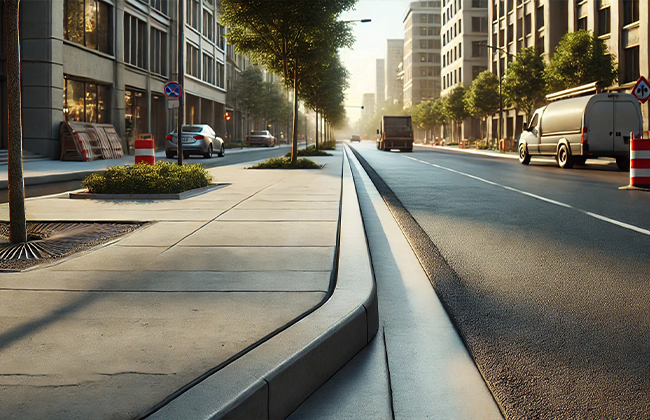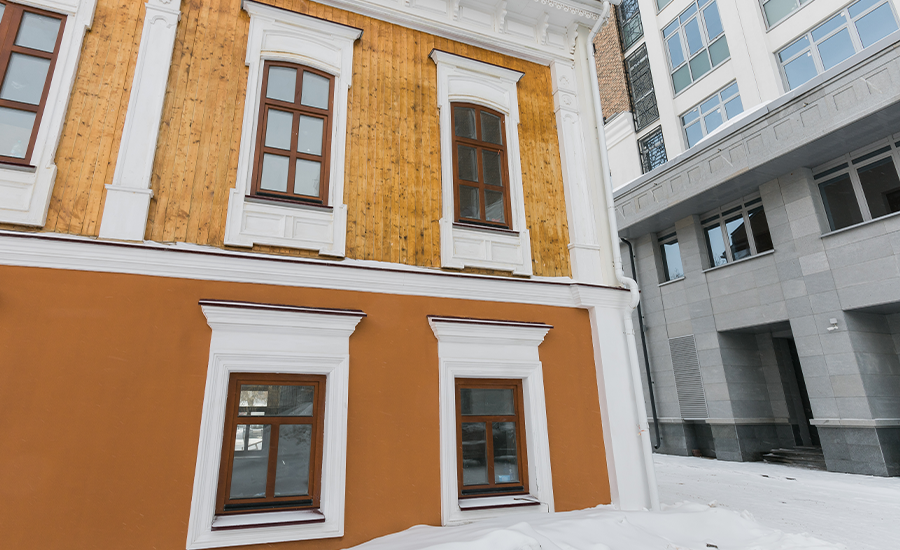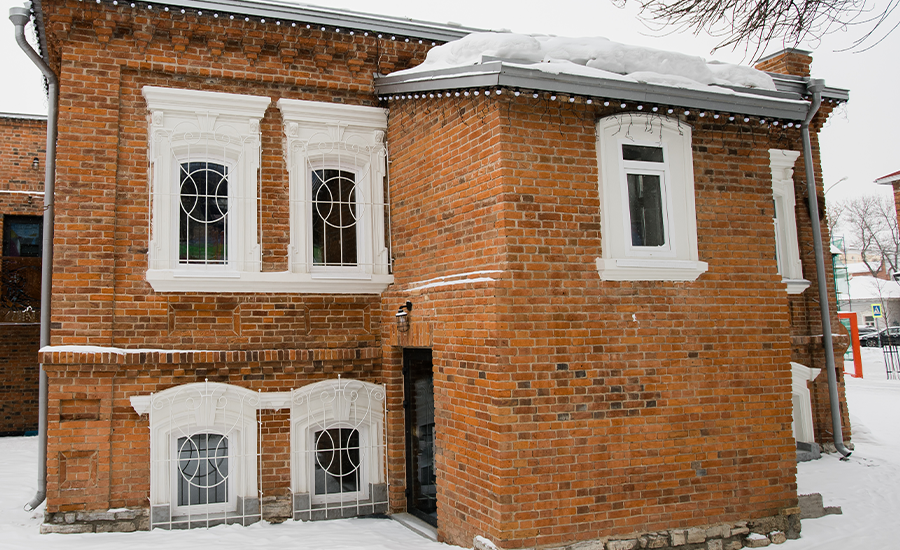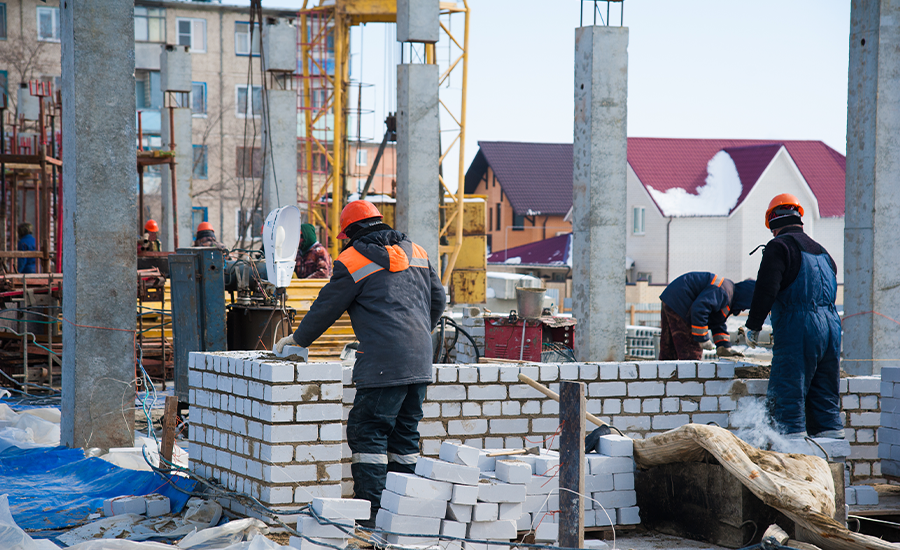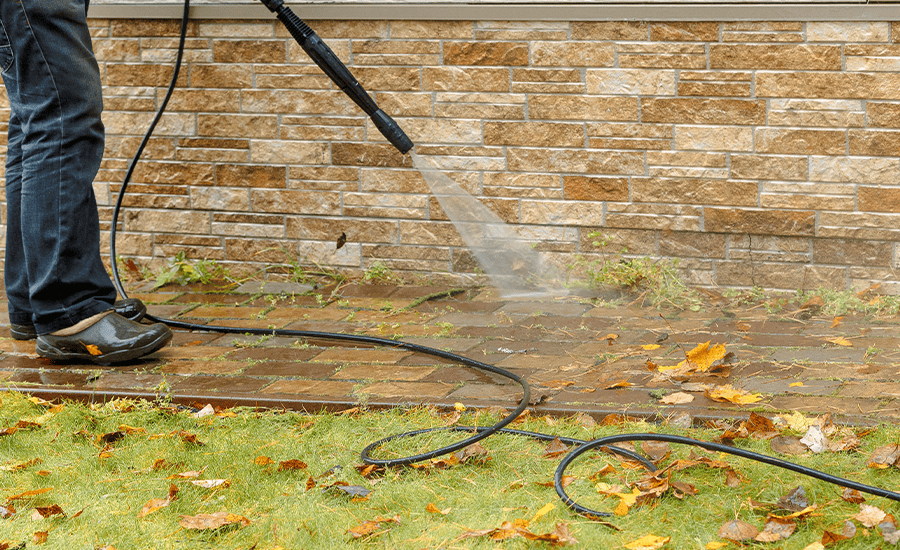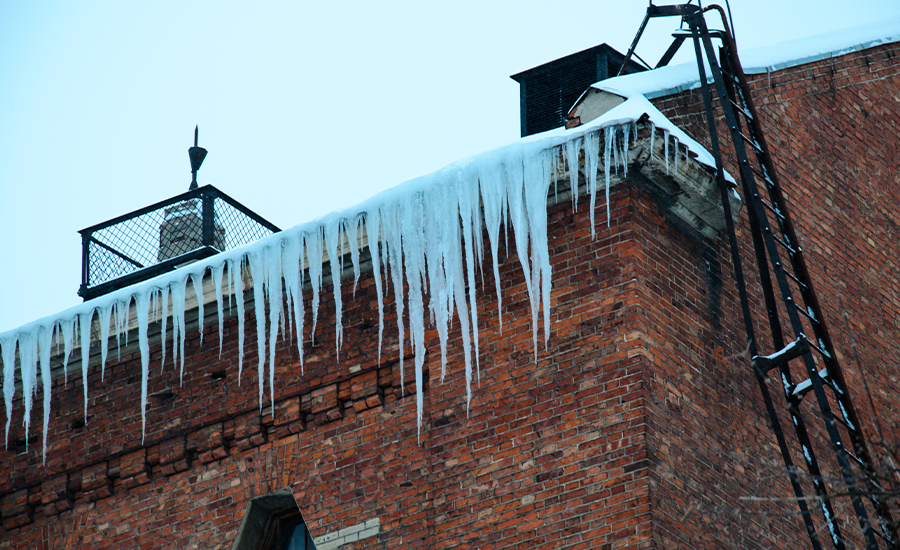Are you pondering a sidewalk replacement but not sure where to start? Understanding the ins and outs of sidewalk replacement cost can help guide your decisions. Whether it’s choosing the right materials, finding the best times for construction, or selecting skilled contractors, each aspect plays a crucial role in the overall cost and outcome of your project. From concrete to brick, and stone options, each material offers unique benefits and challenges that can affect both the initial investment and long-term upkeep of your new sidewalk.
What Drives the Cost of Sidewalk Replacement?
Alright, let’s dive into the nitty-gritty of what really bumps up the price tag on replacing a sidewalk. We’re looking at materials, the size of your project, and yes, the twists and turns your path might take!
1. Choice of Material:
Choosing the right material for your sidewalk isn’t just about picking what looks good—it’s about balancing beauty, budget, and durability.
Here’s a quick rundown on what each material brings to the table:
- Concrete: It’s the popular kid in the world of sidewalks, and for good reason. Not only does concrete stand up to wear and tear like a champ, but it’s also kind to your budget. If you want a dependable, low-maintenance walkway, concrete is your best bet.
- Brick: If you’re going for that classic, charming look, brick is the way to go. It offers a timeless appeal that can really make your property stand out. Just remember, all that beauty comes with a higher price tag, mostly due to the cost of materials and the labor needed to lay each brick perfectly.
- Stone: For those aiming for the pinnacle of elegance, stone is unmatched. Whether it’s granite, bluestone, or another natural option, stone sidewalks offer a premium, high-end look. Keep in mind, this luxury comes at a cost, both for the materials and the skilled installation required.
Each material has its pros and cons, so consider what’s most important for your project—cost, durability, or aesthetics. Choose wisely to ensure your new sidewalk meets all your expectations!
2. Project Size and Complexity:
Now, how much sidewalk are we talking about? The length and the layout play huge roles in determining your final costs.
- Simple Straight Paths: If your sidewalk plan is straightforward—literally a straight line from point A to B—you’re in luck. This is the most budget-friendly option because it’s easy to measure, quick to lay down, and doesn’t require any special adjustments.
- Complex Designs: Thinking of a winding path through your garden? Or maybe a circular design around a fountain? It looks fantastic, but it’ll cost more. Why? Because complex designs require more planning, cutting, and sometimes specialized labor. Plus, waste material can increase with all those cuts and adjustments.
So, when you’re planning that sidewalk replacement, consider these factors carefully. They’ll not only affect how much you spend but also how your project turns out. Whether you choose straightforward and sturdy or stylish and sophisticated, make sure it fits both your budget and your vision.
3. Labor Costs:
When planning your sidewalk project, choosing the right team to do the job is as important as selecting the materials. The quality of labor can significantly influence both the longevity of your sidewalk and the smooth execution of the project. Here’s a detailed look at what you might expect to pay for labor:
- Skill Level and Expertise: You’re not just paying for someone to lay down materials; you’re investing in their expertise and experience. For instance, a contractor with extensive experience in laying intricate brick patterns will likely charge between $12 to $18 per square foot, reflecting their advanced skills and expected quality of work.
- Project Complexity: A straightforward, single-material sidewalk might cost you around $8 to $12 per square foot in labor. However, if you’re opting for a design that involves multiple materials, intricate patterns, or special artistic touches, labor costs can easily climb to $20 per square foot or more.
- Geographical Variations: Labor costs can vary significantly based on your location. For example, in metropolitan areas like New York City or San Francisco, you can expect to pay on the higher end of the scale due to the higher cost of living and operating a business. In contrast, rural or less populated areas might offer lower rates due to reduced overhead costs.

Transform your walkway with our expert general contracting services, specializing in concrete sidewalks.
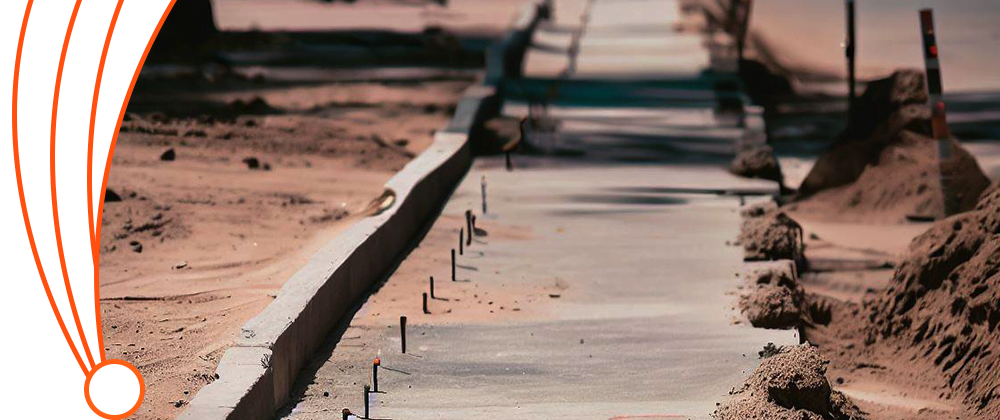
4. Permits and Compliance:
Permits and compliance are critical aspects of your sidewalk replacement project, ensuring that all work meets local safety and construction standards. Here’s a detailed look at what this entails:
- Navigating Permit Costs: Typically, permit costs for a residential sidewalk project range from $50 to $300, depending on the complexity and location of the project. In some cities, costs can be higher due to additional regulatory requirements or the need for multiple permits.
- Inspection and Compliance: Beyond the initial permit fees, your project may require one or more inspections to ensure compliance with local codes. These inspections can uncover issues that require adjustments, potentially adding to the overall cost. Ensuring everything is done right the first time around can help avoid these extra expenses.
- Timeline and Bureaucracy: It’s important to factor in the time it may take to obtain permits and clear inspections. Delays in this phase can extend the project timeline and impact your scheduling, particularly if you’re coordinating multiple contractors or dealing with seasonal weather constraints.
Handling permits and compliance correctly from the start can save you a lot of headaches. It’s about making sure that your new sidewalk is not just beautiful, but legal.
With a solid understanding of the costs related to labor and legal requirements, you’re better equipped to plan your sidewalk replacement project effectively.
5. Removal and Disposal:
When you’re saying goodbye to your old sidewalk, the process is more than just breaking it apart—it’s about handling what’s left behind properly. If your sidewalk has been a faithful companion for many years, it may not go quietly. More established or extensively damaged sidewalks require heavier equipment and more labor to remove, which naturally drives up the cost. Let’s break it down:
- Tough Removals: The more stubborn the old sidewalk, the tougher the removal. Think of it like this: the older and more cracked it is, the more time and tools you’ll need to break it up.
- Disposal Fees: Once you’ve broken up the sidewalk, where do those pieces go? You can’t just leave them lying around. Most cities require you to dispose of the debris at designated facilities, and sometimes there’s a fee involved. Plus, transporting heavy materials isn’t cheap—the further the facility, the higher the transport costs.
- Environmental Compliance: Following the rules for disposal is crucial. Many areas have strict regulations about how and where to dispose of construction debris to minimize environmental impact. Making sure you comply can sometimes add to the cost but think of it as doing your part for the planet.
6. Preparation of the Site:
Now, prepping the site for your new sidewalk is where you set the stage for success. It’s not just about removing what’s old but preparing for what’s new. This stage is all about attention to detail and getting things right from the ground up. Here’s what’s involved:
- Leveling and Grading: You need a level base to avoid a wavy or uneven sidewalk. Proper grading is essential not just for aesthetics but for functionality, ensuring there’s no water pooling in parts of your sidewalk.
- Enhancing Drainage: Speaking of water, good drainage is key. It’s not just about directing rainwater away from your sidewalk but also ensuring it doesn’t undermine the structure over time, which can lead to cracks or heaves.
- Foundation Matters: Underneath every great sidewalk is a solid foundation. Using the right base material—like crushed stone or gravel—is crucial. This layer helps with drainage and provides a stable base, preventing your sidewalk from shifting with the freeze-thaw cycles.
Investing in thorough site preparation isn’t just about spending money; it’s about saving it too. A well-prepared site means a longer-lasting sidewalk, fewer repairs, and more stability. It’s the kind of groundwork that pays dividends in durability and aesthetics.
As we wrap up the discussion on removal, disposal, and site preparation, it’s clear these steps are pivotal in setting up for a successful sidewalk replacement. But what about the styles and their costs?
Next up in our guide, we’ll explore the Different Sidewalk Styles and Their Costs. Whether you’re considering the classic charm of brick, the durability of concrete, or the elegance of stone, understanding their cost implications will help you make the best choice for your project and budget. Let’s dive into that next!
Different Sidewalk Styles and Their Costs
Picking the right sidewalk style isn’t just about aesthetics; it’s also about budget and functionality. Whether you go for concrete, brick, or stone, each choice brings its own flair and set of considerations. Let’s dig deeper into each option to help you make the best decision for your space and wallet.
Concrete Sidewalks:
Concrete isn’t just practical; it’s also remarkably adaptable. It offers a blank canvas for various finishes and colors, making it a popular choice for both residential and commercial properties.
- Cost-Effectiveness: Generally, concrete is your most budget-friendly option. You’re looking at approximately $8 to $18 per square foot, which varies based on finishes and complexity.
- Durability: It’s known for its strength and longevity. Concrete can withstand harsh weather and heavy foot traffic, making it a sturdy choice for any environment.
- Maintenance: Low maintenance is the name of the game with concrete. Regular cleaning and the occasional sealing job are usually all it takes to keep it in good condition.
Brick Sidewalks:
There’s a timeless charm to brick that can make any pathway or patio space feel a bit more inviting and elegant.
- Aesthetic Appeal: Brick offers that classic look that many homeowners and businesses desire for creating a warm, welcoming atmosphere.
- Cost Considerations: Opting for brick means a higher price tag, typically ranging from $10 to $25 per square foot. The labor-intensive installation and the material cost contribute to the expense.
- Maintenance Needs: Brick might require a bit more TLC over the years. Weather and wear can cause bricks to shift or become loose, necessitating periodic adjustments or replacements to keep the pathway safe and attractive.
Stone Sidewalks:
If you’re looking to make a statement, stone is the way to go. It provides an unrivaled level of sophistication and natural beauty that’s hard to match.
- Luxury Look: Stone exudes elegance and can significantly enhance the curb appeal of any property.
- Pricing: Stone is the premium option with costs ranging from $15 to $30 per square foot. The type of stone chosen—be it granite, slate, or limestone—will impact the final cost.
- Upkeep: Stone sidewalks might need more upkeep to preserve their natural beauty. They can be prone to weathering, so regular cleaning and protective sealing are important to maintain their condition.
By considering these materials and their unique properties, you’re better equipped to choose a sidewalk that not only fits your budget but also complements the style of your home or business. As we wrap up our look at different sidewalk styles, remember that making a smart choice now can save you both time and money in the long run. Up next, let’s dive into some Cost-Saving Tips for Sidewalk Replacement. These tips will help you maximize your investment and ensure that your new sidewalk is both beautiful and economically savvy. Stay tuned for practical advice on how to stretch your dollars further!

Transform your walkway with our expert general contracting services, specializing in concrete sidewalks.

Cost-Saving Tips for Sidewalk Replacement
Replacing a sidewalk doesn’t have to drain your wallet. With a few strategic moves, you can keep costs down while still getting a fantastic result. Let’s dive into some practical tips that can help you save money on your sidewalk replacement project.
Get Multiple Estimates
It’s always wise to shop around before making any big decisions. Getting multiple estimates is more than just about finding the lowest price; it’s about finding the best value. Here’s how to do it effectively:
- Compare Wisely: When you receive estimates, look closely at what’s included. Are materials and labor costs clearly outlined? What about the costs for site prep and cleanup? Making sure all bids are comprehensive allows you to make an informed comparison.
- Negotiate: Armed with multiple estimates, you can negotiate more effectively. Contractors will often match or beat their competitor’s pricing if it means securing your business.
Choose Off-Season Times
Contractors and supplies can be in high demand during the spring and summer, which often leads to higher prices. Here’s how timing can play to your advantage:
- Plan for the Off-Peak: Scheduling your project during the colder months might snag you a lower rate as contractors look to keep their crews busy.
- Be Flexible: If you can be flexible with your start date, let contractors know. They might offer a discount if they can fit your project in around their peak times.
DIY Demolition
If you’re comfortable with handling some of the heavy lifting yourself, consider taking on the demolition phase:
- Direct Savings: By removing the old sidewalk yourself, you can save on the labor costs typically charged by contractors. Just be sure you have the necessary tools and understand the scope of work involved.
- Dispose Properly: Ensure you understand how to properly dispose of the debris. Renting a dumpster or making a run to a disposal facility might be required, but it’s usually less expensive than having the contractors handle it.
Implementing these tips can lead to substantial savings on your sidewalk replacement project. Each step requires careful consideration and planning, but with a bit of effort, you can keep costs down while still achieving excellent results.
As we consider how to save on your project, let’s also look at how different materials and designs might influence your choices and budget. Up next, we’ll take Sidewalk Options. This will help us understand the pros and cons of various options, guiding you to make a decision that balances cost, appearance, and durability.
Sidewalk Options: A Comparative Look
Choosing the right material for your sidewalk replacement is a key decision that affects both the project’s cost and the long-term satisfaction you’ll get from the finished product. Let’s take a closer look at some common materials and how they stack up against each other. This comparison will help you weigh the pros and cons based on durability, cost, maintenance, and aesthetics.
Concrete vs. Brick
When considering concrete and brick, there are a few factors to keep in mind:
- Cost and Maintenance: Concrete often comes out ahead in terms of initial cost and ongoing maintenance. It’s generally less expensive per square foot and requires less upkeep over time compared to brick.
- Aesthetic and Versatility: Brick offers a classic look that many homeowners love. It’s available in various colors and can be laid in unique patterns to create a visually appealing walkway. However, brick may require periodic adjustments due to shifting or settling.
Stone vs. Brick
Deciding between stone and brick? Here’s what you need to know:
- Durability and Cost: Stone is incredibly durable and often considered a premium material, which is reflected in its higher upfront cost. It can last for decades with minimal maintenance.
- Aesthetic Differences: While both materials are visually appealing, stone offers a unique natural beauty that can significantly enhance the property’s value and curb appeal. Brick provides a traditional look that suits many settings but may need maintenance to address any shifting over time.
Rubber vs. Concrete
Rubber and concrete offer different benefits, especially if safety and climate considerations are important:
- Safety and Comfort: Rubber is an excellent choice for areas where safety and comfort are priorities, such as playgrounds or areas frequented by children and seniors. It’s softer underfoot and can reduce the risk of injuries from falls.
- Weather Resistance and Longevity: Concrete, while harder, stands up better to various weather conditions and wear over time. Rubber may degrade faster, especially in areas with extreme weather conditions.
Each of these materials has its strengths and weaknesses, so choosing the right one depends on your specific needs, budget, and aesthetic preferences. Consider how each material will blend with your environment and what kind of maintenance commitment you are willing to make.
As we wrap up this detailed look at different sidewalk options, it’s also crucial to think about the long-term implications of your choice. Up next, we’ll discuss the importance of viewing your sidewalk replacement as a Long-Term Investment. This perspective will help ensure that the money and effort you put into your project will offer lasting benefits, enhancing your property’s value and functionality for years to come.
Long-Term Investment: Why Choosing the Right Sidewalk Matters
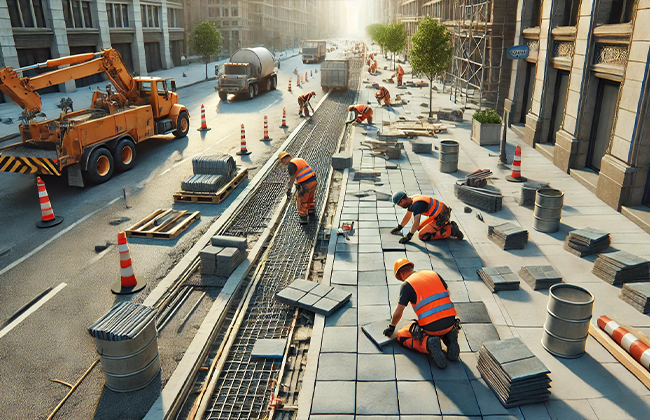
When you’re planning a sidewalk replacement, it’s easy to focus just on the immediate costs and results. However, considering this as a long-term investment can significantly influence your satisfaction and financial return down the road. Let’s explore why the right choices in materials and contractors can make such a big difference.
Importance of Quality Materials
Choosing the best materials for your sidewalk isn’t just about aesthetics—it’s about durability and longevity:
- Durability Over Time: High-quality materials may cost more upfront, but they withstand the elements better and last much longer. This means you’ll spend less on maintenance and repairs, which adds up to considerable savings over the lifespan of your sidewalk.
- Weather Resistance: Materials like high-grade concrete or natural stone can handle extreme weather conditions, from blistering summers to freezing winters, without cracking or shifting as much as lower quality options.
- Aesthetic Value: A sidewalk made from superior materials not only looks better but can also enhance the overall appeal of your property. This is particularly important if you’re thinking about resale value. A well-maintained and visually appealing sidewalk can significantly boost your home’s curb appeal.
Choosing the Right Contractors
The craftsmanship of the people who install your sidewalk is just as crucial as the materials used:
- Professional Installation: Skilled contractors ensure that the sidewalk is installed correctly from the start, which minimizes future issues like uneven paving, poor drainage, or premature cracking.
- Accountability: Reputable contractors often provide warranties or guarantees on their work. This not only protects your investment but also gives you peace of mind knowing that any potential problems could be addressed without additional costs.
- Expert Advice: Experienced professionals can offer valuable insights on the best materials and techniques for your specific situation, considering factors like climate, soil type, and the usage patterns of the area.
The Long-Term Benefits
Investing in a quality sidewalk project brings several long-term benefits:
- Reduced Maintenance Costs: A well-constructed sidewalk requires less frequent repairs, reducing your ongoing expenses.
- Increased Property Value: An attractive and durable sidewalk can increase your property’s market value, making it more appealing to potential buyers if you decide to sell.
- Enhanced Safety: High-quality sidewalks provide safer walking surfaces, reducing the risk of accidents and potential liability issues.
Considering your sidewalk replacement as a long-term investment encourages you to look beyond the initial costs and focus on the broader benefits. While it might be tempting to choose the least expensive options now, weighing how they’ll stand up to years of use and varying weather conditions can lead you to make decisions that offer greater value over time.
As we conclude this exploration of why the right sidewalk is a vital long-term investment, remember that your choices today will affect your property’s functionality, aesthetics, and value well into the future. Making well-informed decisions now can ensure that your sidewalk serves you well for many years, turning what might seem like just another renovation into a wise investment in your property’s future.
Conclusion
Wrapping up, the choices you make during your sidewalk replacement project will impact not just your immediate expenses but also the long-term value and functionality of your property. Opting for quality materials and professional installation pays off by minimizing future repair costs and enhancing curb appeal. If you’re seeking a skilled contractor to ensure your sidewalk replacement meets the highest standards, don’t hesitate to contact us at (+1) 917-355-8556 for expert assistance.
FAQs
Q: What is the typical cost range for a sidewalk replacement?
A: The cost of a sidewalk replacement can vary widely, typically ranging from $8 to $20 per square foot, depending on materials and labor.
Q: How long does a typical sidewalk replacement take?
A: A sidewalk replacement project usually takes from a few days to a week, depending on the size of the sidewalk and the complexity of the job.
Q: Does the choice of material affect the longevity of a sidewalk replacement?
A: Absolutely, the material chosen for a sidewalk replacement plays a critical role in its durability and maintenance needs, impacting how long the sidewalk will last.
Q: What should I consider when planning a sidewalk replacement?
A: When planning a sidewalk replacement, consider the material costs, the local weather conditions, and the expected foot traffic, as these factors will influence both the construction approach and the maintenance required.
Q: Can a sidewalk replacement increase my property value?
A: Yes, a well-executed sidewalk replacement can significantly enhance your property’s curb appeal and, consequently, its overall market value.
Q: How to calculate sidewalk cost?
A: To calculate the cost of a sidewalk, multiply the area (in square feet) by the cost per square foot, which varies based on material and labor. Remember to include extra expenses like demolition and disposal to get an accurate sidewalk replacement cost.
Q: How much does sidewalk repair cost in NYC?
A: Sidewalk repair cost in NYC typically ranges from $12 to $30 per square foot, influenced by the damage extent and materials used. This range helps estimate the overall sidewalk replacement cost.
Q: What is the cheapest way to make a sidewalk?
A: The cheapest way to construct a sidewalk, reducing sidewalk replacement cost, is by using plain concrete. It’s cost-effective, durable, and you can lower expenses further by handling some tasks like demolition yourself.
Q: How many square feet is a sidewalk slab?
A: A typical slab for a sidewalk replacement measures 5 feet by 5 feet, totaling 25 square feet. Understanding the dimensions can help accurately calculate the sidewalk replacement cost for budgeting purposes.

Transform your walkway with our expert general contracting services, specializing in concrete sidewalks.


